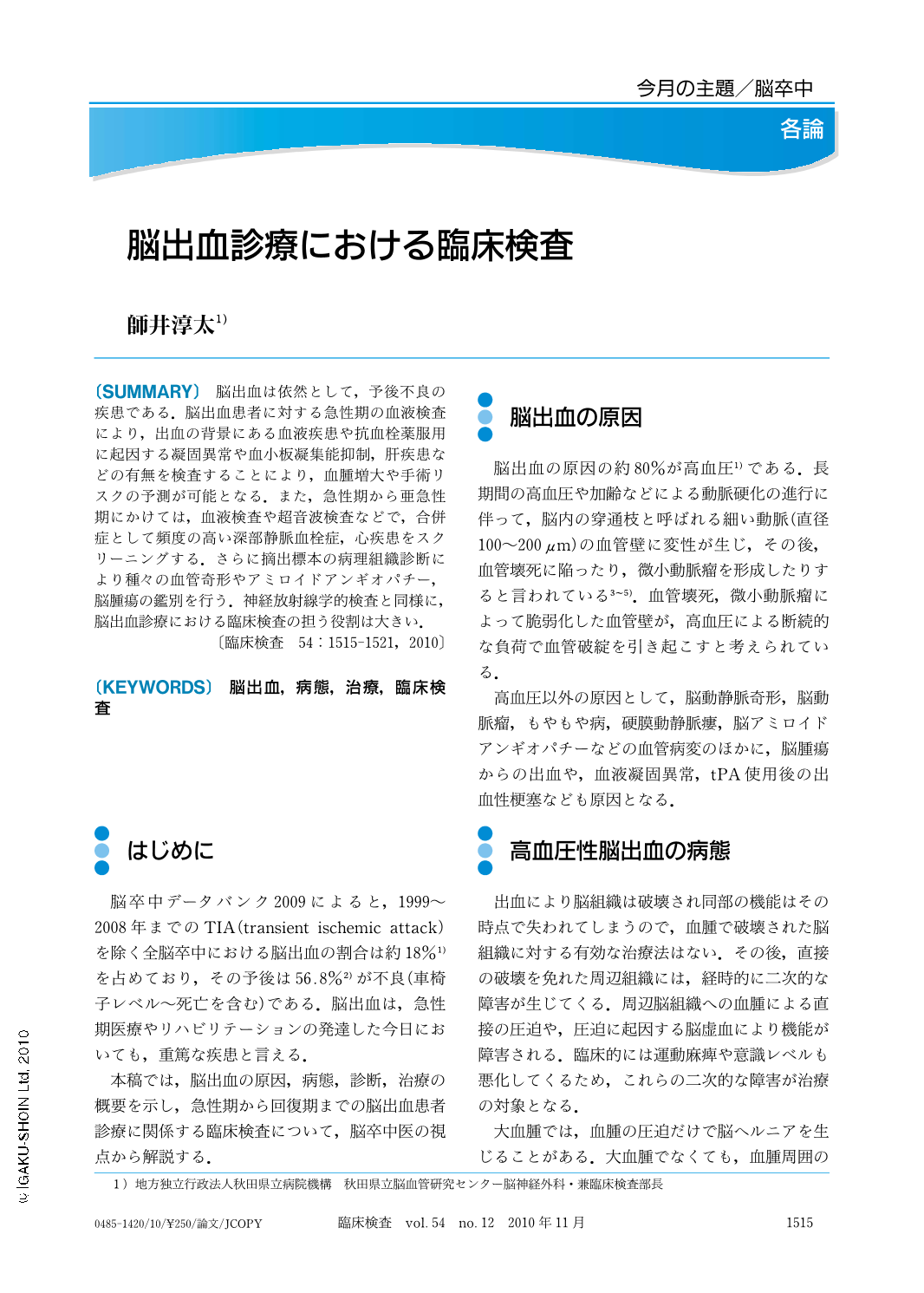Japanese
English
- 有料閲覧
- Abstract 文献概要
- 1ページ目 Look Inside
- 参考文献 Reference
脳出血は依然として,予後不良の疾患である.脳出血患者に対する急性期の血液検査により,出血の背景にある血液疾患や抗血栓薬服用に起因する凝固異常や血小板凝集能抑制,肝疾患などの有無を検査することにより,血腫増大や手術リスクの予測が可能となる.また,急性期から亜急性期にかけては,血液検査や超音波検査などで,合併症として頻度の高い深部静脈血栓症,心疾患をスクリーニングする.さらに摘出標本の病理組織診断により種々の血管奇形やアミロイドアンギオパチー,脳腫瘍の鑑別を行う.神経放射線学的検査と同様に,脳出血診療における臨床検査の担う役割は大きい.
Intracerebral hemorrhage remains a critical health issue that can adversely affect the ADL of many patients. Hypertension is the greatest cause of cerebral hemorrhage, and arteriovenous malformation, aneurysm, moyamoya disease, cavernous angioma and amyloid angiopathy also cause the condition. Neuroradiological examinations such as CT (computed tomography), MRI (magnetic resonance imaging) and cerebral angiography are very useful for diagnosis. On the other hand, in the treatment of cerebral hemorrhage, laboratory data such as blood tests or physiological examination are also very important. The hemorrhagic diathesis test is particularly important because it affects the increase in hematoma volume, the outcome of the patient and the risk of surgical evacuation. According to the current guidelines for stroke, there are few indications of surgical evacuation for cerebral hemorrhage, but it is necessary to distinguish cavernous angioma, amyloid angiopathy or brain tumor by pathological examination in order to diagnose causes of hemorrhage other than hypertension. In addition, screening of latent heart disease and deep venous thrombosis by performing cardiac ultrasonography and lower limb vein sonography make it possible to avoid these critical complications during the acute phase and rehabilitation period of intracerebral hemorrhage.

Copyright © 2010, Igaku-Shoin Ltd. All rights reserved.


